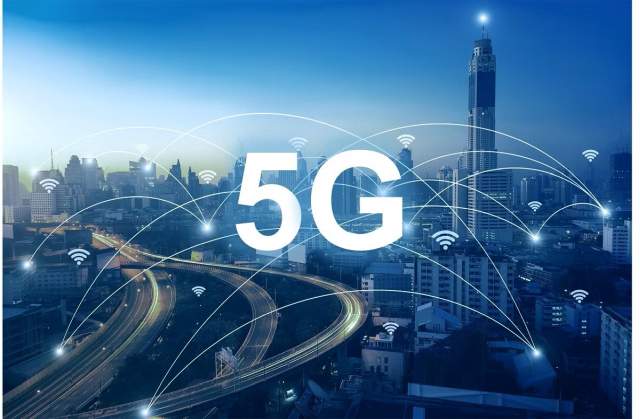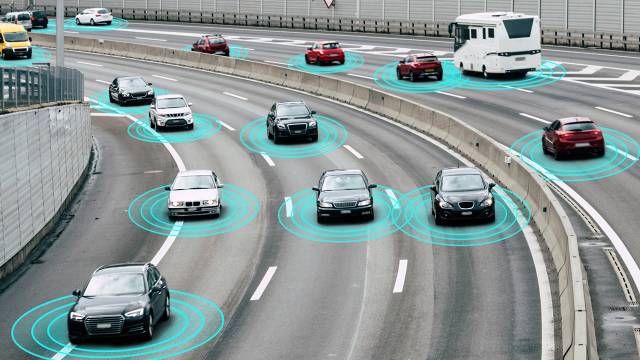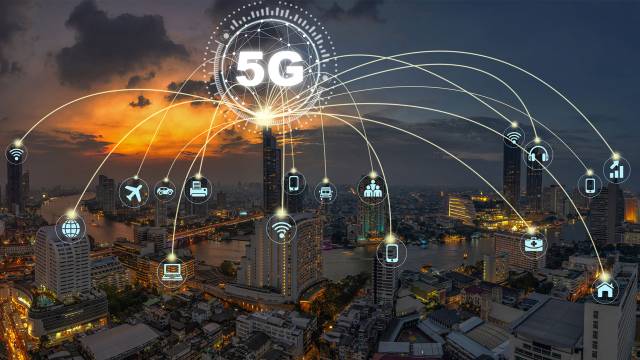It’s 2025, and the whole “smart city” thing isn’t just some sci-fi idea anymore. Seriously, take a look around our cities are getting smarter, more connected, and way more responsive than ever before. So, what’s behind this huge transformation? Honestly, a lot of it comes down to fifth generation wireless tech yep, 5G. Say goodbye to those days of painfully slow connections and endless buffering. 5G is changing the game for how our cities run and how the Internet of Things (IoT) just fits right into our everyday lives.

Ever get annoyed by public cameras that take forever to load or city apps that seem stuck in slow motion? Yeah, those frustrations are on their way out. Let’s break down exactly why 5G is such a massive deal for smart cities and IoT.
The Backbone Upgrade: How 5G Supercharges Smart City Infrastructure
Picture older mobile networks like 4G LTE as trusty highways. They got us where we needed to go when it came to phones and basic internet stuff. But now? Cities are packed with millions of gadgets all trying to talk at once. That calls for something way better think superhighways with tons of lanes and express routes just for special traffic. That’s where 5G comes in.
Here’s what makes 5G so revolutionary for city infrastructure:
- Blazing Speeds: With 5G, downloads and uploads happen at lightning speed. Imagine grabbing an HD city map or streaming video from a drone inspection done in seconds.
- Massive Capacity: Cities rely on an army of sensors, cameras, vehicles, you name it all needing to connect at once. 5G can handle millions of devices per square kilometer. That’s just wild compared to older networks.
- Ultra-Low Latency: This one’s huge. Latency is basically the lag between sending and getting info back. 5G chops that delay down to almost nothing (we’re talking milliseconds). For stuff that needs an instant response like emergency systems or self-driving carsthat’s a total game-changer.
Plus, the tech under the hood like 5G NR (New Radio) and network slicing (which lets you carve out dedicated “lanes” for different uses)means cities can tailor their networks for exactly what they need. It’s not just an upgrade; it’s like laying the foundation for a whole new digital city.
Powering Billions: What 5G Means for IoT Devices in Smart Cities
Let’s be real: smart cities only work because they’re drowning in data from simple air quality sensors to super-advanced traffic systems. Before 5G showed up, connecting all those gadgets efficiently was kind of a nightmare.
Here’s why 5G is such a big win for IoT:
- Massive Machine-Type Communications (mMTC): 5G is built to handle crazy-high numbers of devices without breaking a sweateven when everyone’s online at once.
- Enhanced Reliability: For things like monitoring water pipes or electrical grids, you can’t afford dropped connections. With 5G, those critical sensors stay rock solid.
- Better Energy Efficiency: Loads of sensors need to run on battery power for years at a time. Thankfully, 5G includes special protocols just for low-power devices so they last longer and need less maintenance.
All together, these upgrades mean cities can finally build the complex web of devices needed to make life smoother and smarter and gather real-time data that actually helps leaders make good decisions.
Making Life Better: Real-World Perks of 5G-Powered Cities
Alright, enough about the tech itself what does it actually do for you and me? Here’s where things get exciting: when you put all this power behind specific applications that touch our daily lives.

Check out these examples:
- Safer Streets: Thanks to 5G-powered smart safety apps, first responders get high-def video streams from cameras instantly during emergencies; dispatchers work off precise location data; drones even provide live updates from disaster sites. Millisecond latency means help gets there faster.
- Smarter Traffic: Sick of traffic jams? Who isn’t! With connected vehicles sharing data over 5G (V2X communication), traffic lights adjust on the fly; buses reroute in real time; delivery vans avoid snags all thanks to near-instant info swaps.
- Energy Management Made Easy: Utilities use smart meters over 5G networks to spot problems right away, balance loads better across the grid, bring more renewables online smoothly, and give you tools to track your own usage.
The Need for Speed: Why Low Latency Really Matters
We already mentioned low latency but honestly, it deserves its own spotlight because so many critical services rely on split-second timing.
Think about self-driving cars: they’ve got to “see” hazards and react almost instantly or else! Thanks to nearly zero lag with 5G, these vehicles can talk with each other or with smart streetlights practically in real time.

Other areas where this really shines include:
- Remote control over city infrastructure (like water valves or power grids)
- Real-time drone operations (for deliveries or inspections)
- Telemedicine apps (where doctors need immediate feedback)
And here’s another cool bit: edge computing often goes hand-in-hand with 5G in cities now which means data gets processed close by instead of being sent halfway across the world first. The combo delivers insanely fast results right where they’re needed most.
Innovation Unleashed: 5G’s Sleeve up
Don’t think for a second that we’ve seen everything yet! The latest advancements in 5G are still unlocking new possibilities pretty much every day.
For example:
- Network slicing lets providers create custom “mini-networks” one optimized just for tiny sensors that sip power; another made for streaming high-def security footage; another designed for ultra-reliable emergency comms.
- The rollout of global standards like 5G NR gives even more flexibility supporting everything from basic sensors up through full-on mobile broadband.
All this innovation means developers and city planners can dream up services we haven’t even thought of yet and actually make them work!
Seeing Is Believing: How Cities Are Using 5G Right Now
If you want proof this isn’t all hype, check out some real-world examples already making life better:
- Connected Ambulances: Paramedics send patient vitals straight to hospitals via secure 5G links so doctors know exactly what they’re dealing with before anyone even arrives.
- Smart Waste Collection: Trash bins signal when they’re full; software maps out optimal pickup routes so trucks waste less fuel.
- Environmental Monitoring: Networks of sensors track air quality, noise levels even river heights in real time so cities can respond before little issues turn into big problems.
These aren’t just test runs they’re happening right now in cities around the globe. Maybe you’ve spotted something similar popping up where you live?
Navigating Roadblocks: Challenges Ahead
Of course, rolling out city-wide 5G isn’t always smooth sailing. There are some serious hurdles:
- It costs a lot to build the dense network needed for full coverage.
- Getting access to enough radio frequencies can be tough.
- Blending shiny new tech with old systems takes careful planning.
- And then there’s keeping all that data safe privacy matters more than ever.
So yeah it’ll take creative solutions (especially budget-friendly ones) if smaller towns want in on this revolution too.
Looking Forward: What Comes Next?
Standing here in mid-decade, one thing’s clear the story isn’t over yet! Here are some trends likely headed our way soon:

- Tighter AI integration will mean predictive fixes before stuff breaks and super-personalized services for citizens
- Even denser sensor webs will mean every part of daily life is hyper-connected
- Digital twins (virtual copies of entire cities) will let leaders test ideas before rolling them out
Basically? The line between physical spaces and digital intelligence will keep blurring until “smart city” feels totally normal everywhere you go.
The Bottom Line: Ready or Not, Here Comes the Future
So yeah there’s no turning back now! Fifth generation wireless tech is powering up smart cities and IoT ecosystems everywhere in ways we could only imagine a few years ago. Faster speeds, bigger capacity, near-zero lag they’re opening doors to safer streets, smoother commutes, greener living…you name it!
Sure there are challenges ahead but honestly? The momentum is unstoppable at this point. Instead of just connecting devices, we’re connecting entire communities and shaping how urban life will look tomorrow.
